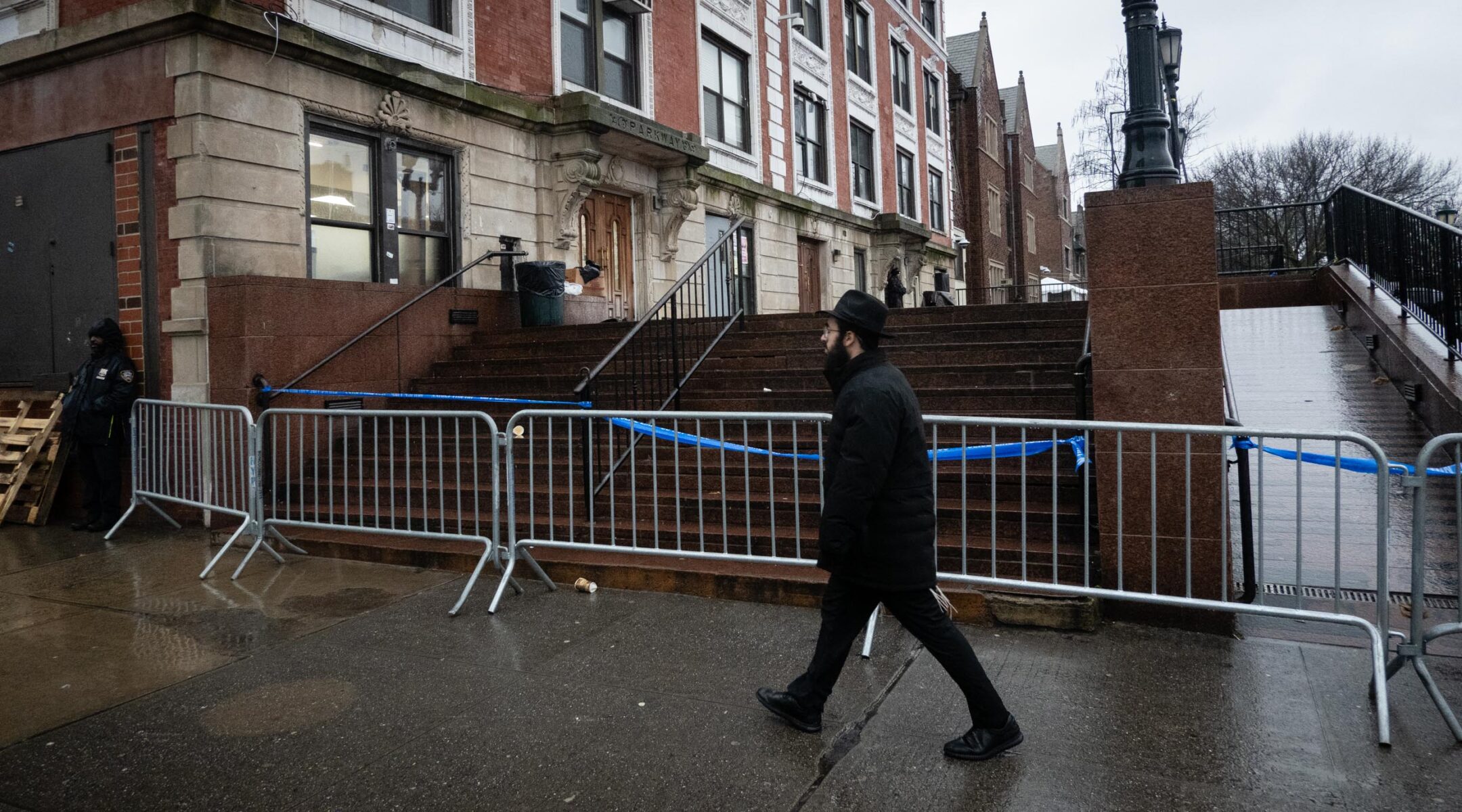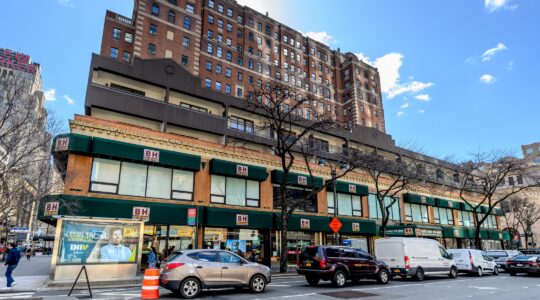(New York Jewish Week) — Days after a wall at Chabad’s Brooklyn headquarters — and the entire internet — broke down over an effort to burrow into a synagogue there, New York City investigators have revealed exactly what kind of tunnel everyone is talking about.
An illicit underground passageway running underneath a building adjacent to the complex’s main synagogue stretched for 60 feet, the city’s Department of Buildings said on Wednesday. The tunnel was 8 feet wide, 5 feet tall and threatening the structural stability of two buildings, the department said.
Drama surrounding the tunnel drew international attention after bedlam broke out at the complex’s synagogue on Monday. A group of men had tried to tunnel into the synagogue in an effort to expand the headquarters, and when the building’s administration attempted to repair holes they had breached, the men tore into the synagogue’s walls.
Nine people were arrested and three cited for disorderly conduct during the commotion, which also gave rise to antisemitic conspiracies online and brought rifts within Chabad to the fore. The headquarters at 770 Eastern Parkway, a building that has taken on symbolic significance for the Hasidic movement and its global network of emissaries, has been closed since Monday afternoon.
But until now, the extent and nature of the tunnel was unknown. Investigators uncovered “a single linear underground tunnel” approximately the length of a bowling alley that had been illegally excavated, the buildings department told the New York Jewish Week on Wednesday.
“The safety of our fellow New Yorkers is our highest priority,” the department said in a statement. “We will continue to monitor the progress of this emergency stabilization work, and if necessary, we are ready to take additional actions that may be required in the interest of public safety.”
Related: The controversial tunnel at Chabad’s Brooklyn headquarters, explained
Reports of the tunnel first surfaced last month, and videos from the scene on Monday showed young men shouting, arguing with police, being handcuffed and taken out of the building in an effort to preserve it. In the end, police arrested people for charges including criminal mischief, reckless endangerment and attempted hate crimes, a spokesperson for the NYPD told the New York Jewish Week. There was no further information on the nature of the alleged hate crimes.
The complex is a place of prayer, study and other Chabad activities, and in the past, it served as the office of the movement’s late leader, Rabbi Menachem Mendel Schneerson, who died in 1994. A small, independent group from Chabad has been pushing to expand 770 — believing that Schneerson, who some Chabadniks believe is the messiah, instructed them to do so. Students who were at the scene told the New York Jewish Week that the tunnel had been part of that effort to expand the complex.
Chabad spokespeople and witnesses to Monday’s mayhem described those responsible for the tunnel as a fringe group within the movement. Chabad leaders have condemned the incident and expressed anguish over the synagogue’s closure.
In response to the city’s investigation, Chabad spokesperson Motti Seligson said on X, formerly Twitter, that a “basement-level space” with similar dimensions to the tunnel found by the Department of Buildings “was dug out by young agitators underneath a ground-level extension made by the synagogue decades ago.” The spokesperson, Motti Seligson, said that concrete had been used to fix some of the damage, in coordination with the city.
Seligson said Chabad leadership had alerted authorities to the “destruction and vandalism” on Monday and coordinated the response with the NYPD.
“This episode has been deeply painful for us and the entire Jewish community,” Seligson said in a statement. “We look forward to the sanctity of the synagogue being restored and its light continuing to emanate to the world.”
The tunnel was in the basement of a single-story building behind the Chabad headquarters’ main synagogue, where Monday’s fracas took place, the city investigation found. The department has been investigating it since Tuesday morning.
Those who dug the tunnel had created several openings in the basement walls of the single-story building. It wasn’t immediately clear how much of the tunnel had been excavated from the ground, and how much was formed by making openings in existing rooms.
The tunnel had rudimentary supports in place and was constructed without approval or permits. City engineers said the excavation had undermined the building above it, as well as another building on Kingston Avenue, causing structural stability issues. The Department of Buildings issued partial vacate orders for both buildings due to safety concerns.
The department said other neighboring structures were unaffected and could be reoccupied, apparently meaning that the synagogue itself was secure.
The city instructed the owners of the properties to hire an engineer to stabilize the excavation and fill in the tunnel where necessary. The owners had already employed an architect, engineer and contractor on site who were preparing to do the emergency work, the department said.
This is not the first controversy to envelop the complex, which has been the subject of a years-long legal battle over ownership between rival Chabad institutions. Disputes over where the site should be expanded, and how it should be done, have gotten renewed attention in the wake of the incident.
Baseless antisemitic conspiracies also spread online, including false claims that a tunnel network under the synagogue was used for trafficking children, echoing centuries-old antisemitic blood libels.
The tunnel was empty except for dirt, tools and debris, the Department of Buildings said.
The New York Jewish Week brings you the stories behind the headlines, keeping you connected to Jewish life in New York. Help sustain the reporting you trust by donating today.





